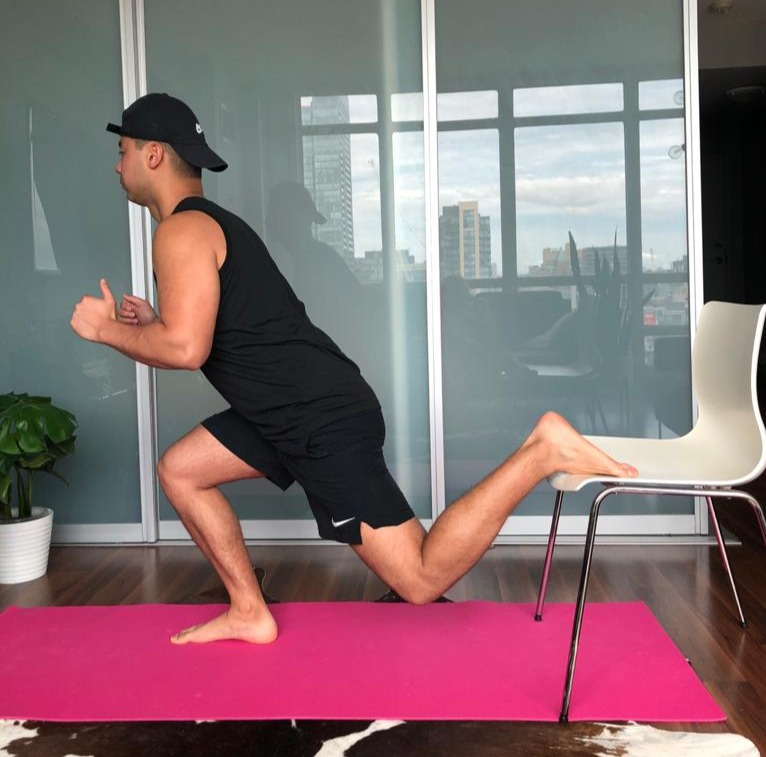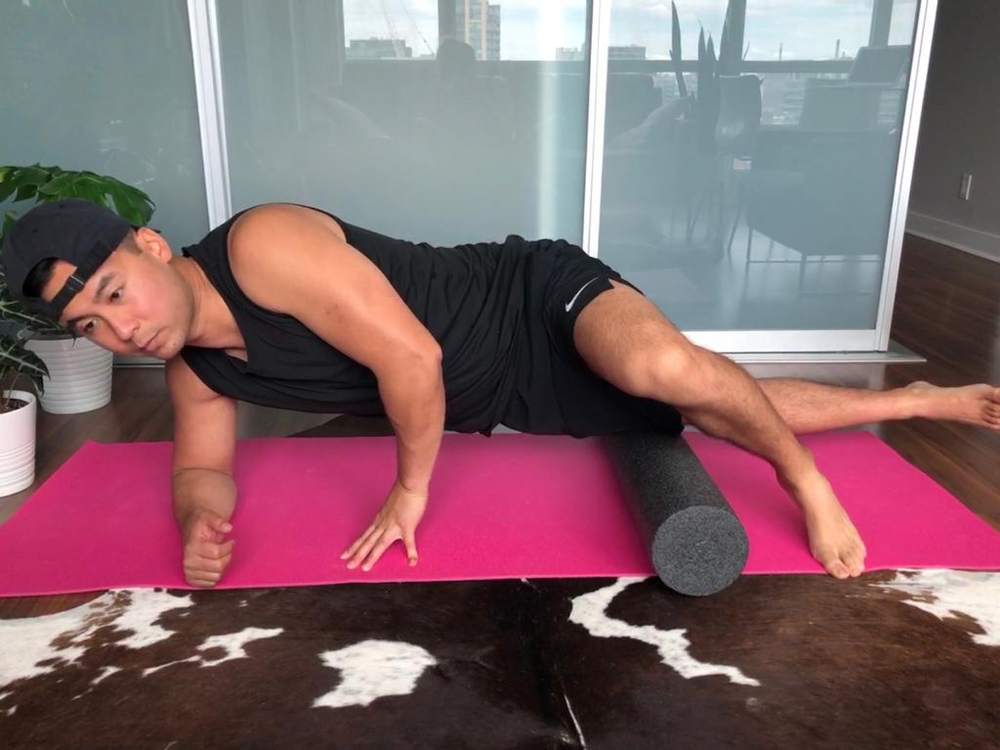Since Toronto gyms are still closed this summer due to Covid 19, many of us has turned to running outdoors as our primary workout. Running has been a great way to get in shape while enjoying some fresh air. But stubborn knee pain can curtail your new hobby. This injury is called “runner’s knee” other wise known as “patellar femoral pain syndrome”. This is a very common knee injury that can be caused from muscle imbalances in your knee and hip. Let’s explore some effective treatment strategies for your knee.
Single Legged RDL’s
Muscles in your hip plays an important role in the alignment of your knee during walking and running. In particular the gluteus medius, the muscle on the side of your hip, keeps the knee straight while you walk and run. When the gluteus medias is weak the knee will deviate inwards causing knee pain. A single legged Romanian Dead Lift (RDL) is a great exercise to strengthen the glut med and the muscles that stabilize the ankle and foot.
Perform this exercise with your shoes off. Keep your heel and the ball of your foot on the ground as your stand on one foot. Bend forward as you reach your arms forward and kick your leg up. Firmly straighten your back leg and lock your elbow. Stand back up as you lower your arms and leg. Repeat this exercise without resting your leg down. As you perform this exercise you will feel the glut med contract to stabilize the hip.

Split Squat
The quadricep muscles attach to the knee cap. Weakness in the quadriceps will lead to poor tracking of the knee cap resulting in pain. The split squat will strengthen the quadriceps. nPerform this exercise with one foot on the floor and one foot up on the couch or chair. Lunge down until your knee makes a 90 degree angle. Drive firmly down against the ground with the balls of your foot to stand back up. Pushing down with the ball of your foot will help you engage your quadriceps more during the split squat. This exercise will work the glut med too as an added benefit.

Shoes
Have you taken a look on how much tread is left on the bottom of your shoes? If you look at your shoes and the tread on the outsole has mostly worn then it may be time to retire those kicks. This is often a sign that the mid sole of your shoes are worn out too. Also what type of shoes are you running in? Clinically, I have treated many patients that have injured their feet, ankle, and knee from running in shoes with a thicker then normal midsole such as the Adidas “ultraboost”. These shoes provide too much cushioning which can encourage people to land hard through their heel and these forces travel to the foot, ankle, and knee. Traditional running shoes by Asics and New balance has a thinner midsole which will encourage you to properly land on your mid foot.

Foam Rolling
Research has shown that foam rolling is very effective at releasing muscle tension. Runner’s knee is caused by the lateral tracking of the knee cap due to muscle tension from the vastus lateralis, IT band, and the gluteus maximus. Foam rolling these muscle may be sore at first but should feel more comfortable with repeated sessions. The combination of foam rolling, strengthening, and updating your shoes should help with your knee pain so you can get back running and enjoying the Toronto summer!





